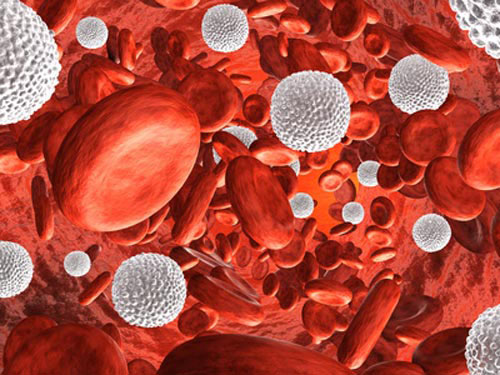In a new study using blood samples from men and women with HIV on long-term suppressive therapy, a team of researchers led by Johns Hopkins Medicine scientists reports new evidence that HIV genomes can be found in circulating white blood cells called monocytes.
Their research is published in Nature Microbiology, in a paper titled, “Monocyte-derived macrophages contain persistent latent HIV reservoirs.”
Monocytes are a type of white blood cell in your immune system. They turn into macrophage or dendritic cells when an invading germ or bacteria enters your body. The cells either kill the invader or alert other blood cells to help destroy it and prevent infection. The scientists found evidence that blood samples from people with HIV undergoing long-term, standard antiretroviral therapy contained monocytes that harbor stable HIV DNA capable of infecting neighboring cells.
“The development of persistent cellular reservoirs of latent human immunodeficiency virus (HIV) is a critical obstacle to viral eradication since viral rebound takes place once anti-retroviral therapy (ART) is interrupted,” wrote the researchers. “Previous studies show that HIV persists in myeloid cells (monocytes and macrophages) in blood and tissues in virologically suppressed people with HIV (vsPWH). However, how myeloid cells contribute to the size of the HIV reservoir and what impact they have on rebound after treatment interruption remain unclear. Here we report the development of a human monocyte-derived macrophage quantitative viral outgrowth assay (MDM-QVOA) and highly sensitive T cell detection assays to confirm purity.”
“We don’t know how critical these monocytes and macrophages are to the eradication of HIV, but our results suggest we should continue research efforts to understand their role in this disease,” said Janice Clements, PhD, professor of molecular and comparative pathobiology at the Johns Hopkins University School of Medicine.
Scientists have long known that HIV stashes its genome most often in a type of immune cell called a CD4+ T-cell.
“To eradicate HIV, the goal is to find biomarkers for cells that harbor the HIV genome and eliminate those cells,” said Rebecca Veenhuis, PhD, assistant professor of molecular and comparative pathobiology at the Johns Hopkins University School of Medicine.
To further study the role of monocytes and macrophages in circulating blood as HIV reservoirs, the Johns Hopkins-led team of scientists obtained blood samples between 2018 and 2022 from 10 men with HIV, all of them taking long-term, standard antiretroviral medications.
The researchers extracted blood cells from the samples and grew the cells in the laboratory. Typically, monocytes transform very quickly—within about three days—into macrophages, producing monocyte-derived macrophages.
All 10 men had detectable HIV DNA in their monocytes-turned-macrophages, but at levels 10 times lower than those found in the men’s CD4+ T cells, the well-established HIV reservoir.
The researchers then used an experimental assay to detect intact HIV genomes in monocytes.
The scientists used the assay on blood samples taken from another group of 30 people with HIV, also treated with standard antiretroviral therapy. The researchers found HIV DNA in the CD4+ T cells and in monocytes of all 30 participants.
The scientists were also able to isolate HIV produced by infected monocytes from half of the research participants. The virus extracted from these cells was able to infect CD4+ T cells.
Three of the participants had their blood examined several times over the four-year study period, and each time, the scientists found HIV DNA and infectious virus produced by their monocyte-derived macrophages. “These results suggest that monocytes may be a stable reservoir of HIV,” said Clements.
In further research, the Johns Hopkins research team plans to pinpoint the subset of monocytes found to harbor HIV DNA and the source of these infected cells.


